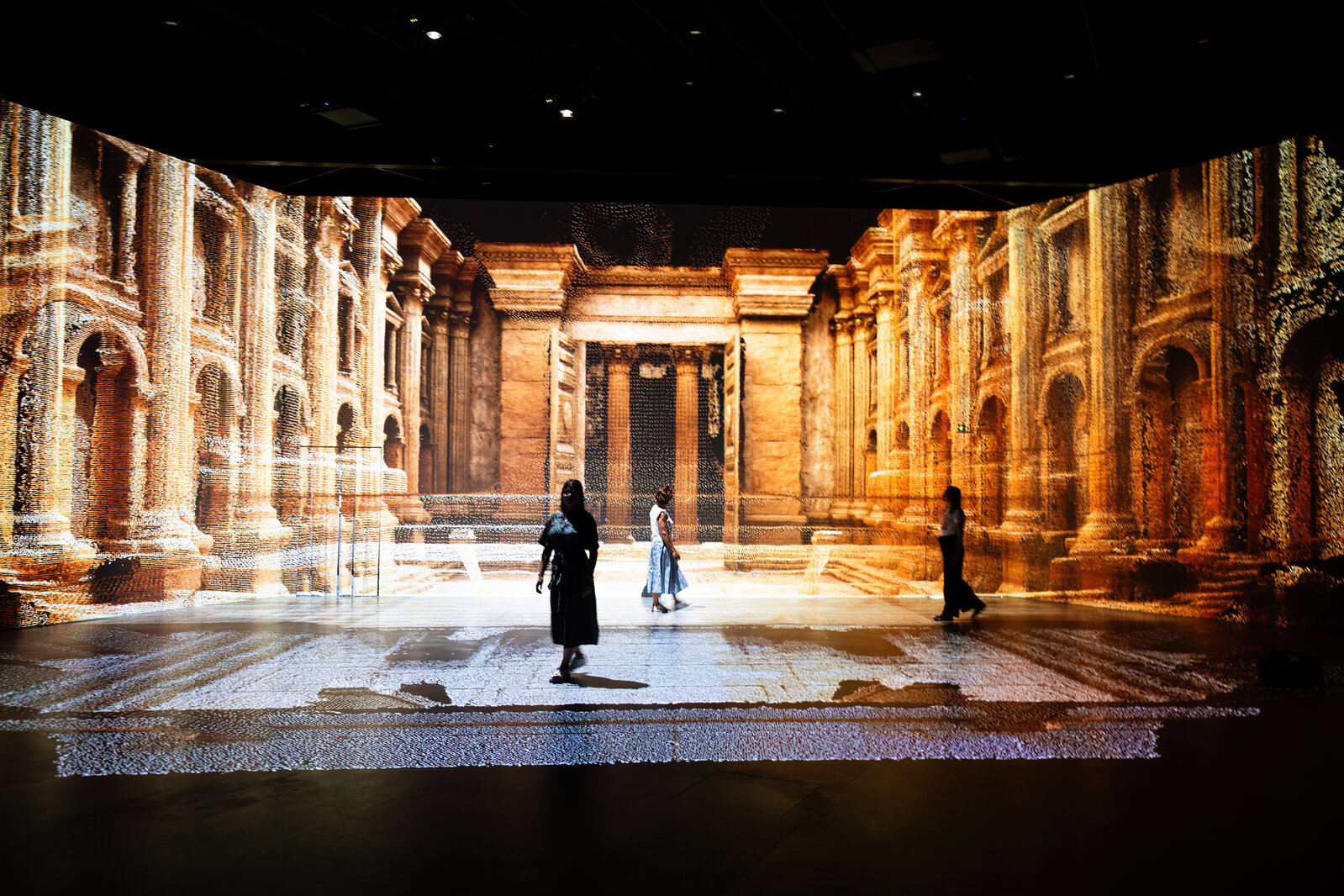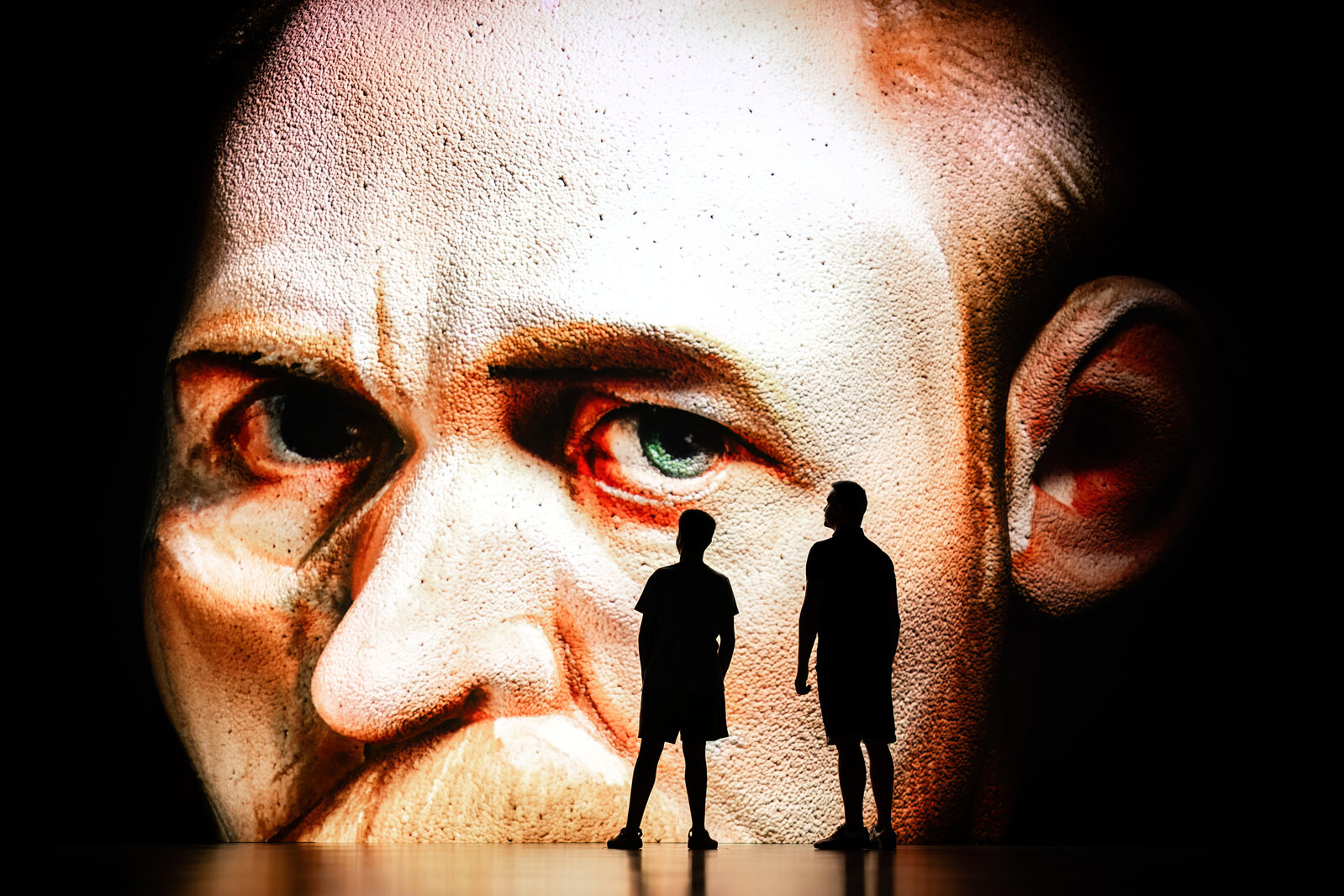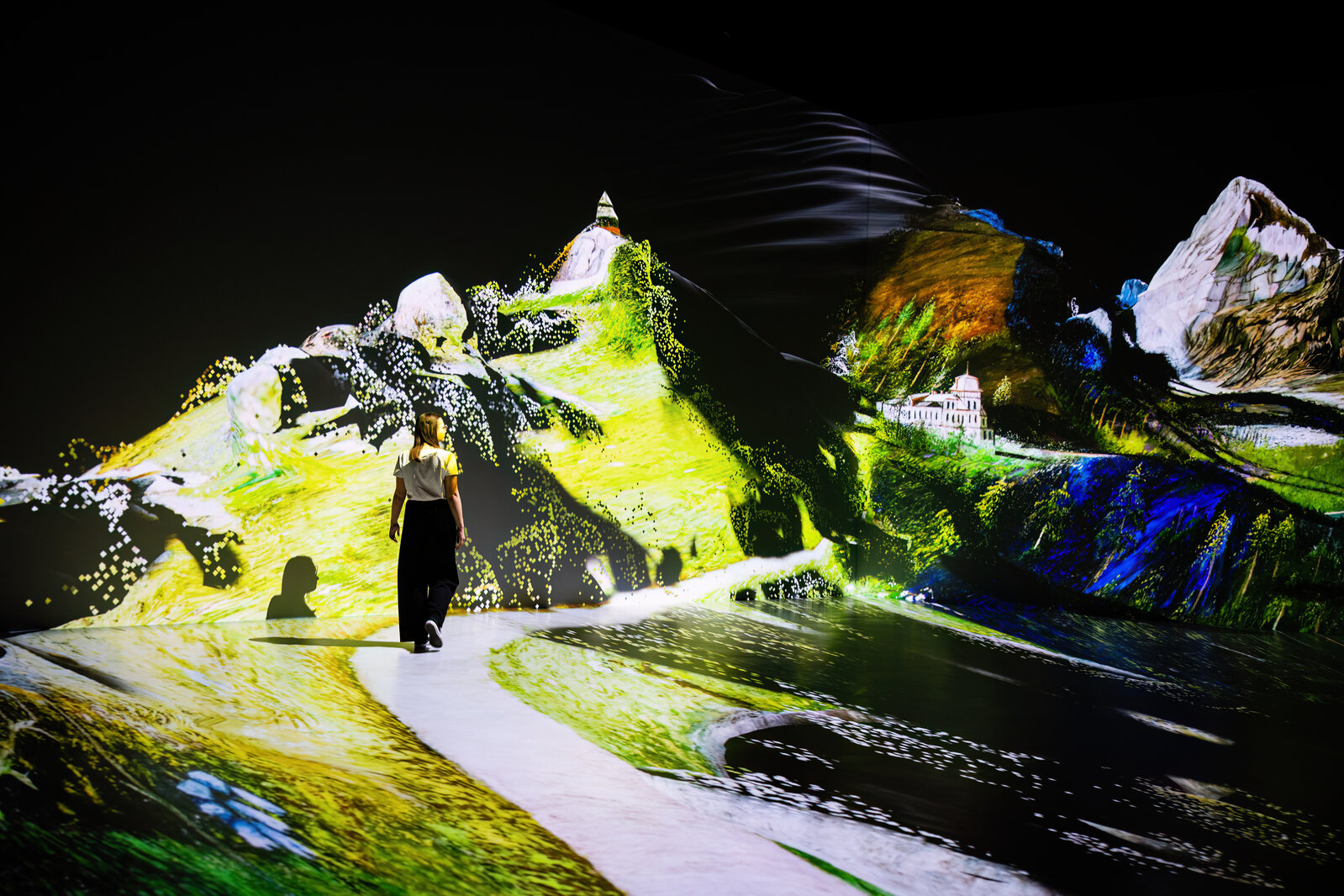Csontváry – In the Language of Photons - Interview with Andrea Sztojánovits
Andrea Sztojánovits, media artist and one of the artistic directors of the immersive exhibition Csontváry – In the Language of Photons, speaks about how the paintings of Tivadar Csontváry Kosztka were transformed into a multisensory audiovisual experience, and how she herself connected with the painter’s vision through 'the language of photons'.

Immersive environments existed long before the classic exhibition halls of the twentieth century. In Renaissance art, for instance, Giulio Romano’s Gods of Olympus (1528), a trompe l’oeil ceiling fresco in the Sala dei Giganti, or Michelangelo Buonarroti’s The Last Judgement (1536–1541) in the Sistine Chapel are early examples.
Such painterly approaches persist in the work of contemporary artists as well, particularly in light-based installations that offer spatial immersion. A striking example from recent art history is The Weather Project (2003) by Icelandic-Danish artist Olafur Eliasson, exhibited in the Turbine Hall of Tate Modern.
With the increasing proliferation of immersive spaces, a trend has emerged worldwide: exhibitions based on the oeuvre of painters, merging elements of documentary film, theatre and audiovisual installation art. This genre invites the contemporary viewer to become an active participant in the work and the process. One can walk or sit, observe or focus on a single point, with each movement reshaping one’s perception of space. The viewer thus becomes immersed in enlarged and reimagined reproductions of original paintings.
Andrea Sztojánovits had previously explored Csontváry’s oeuvre at the invitation of MODEM in Debrecen in 2019. As a creative artist and researcher working in contemporary audiovisual art, she was invited to develop the concept for the CODE exhibition.

The Relationship Between Light and Space
Speaking about the CODE Hexagon space, where the main section of the exhibition is on view, Andrea explains:“To my knowledge, there is no other immersive space with a structure like the Hexagon at CODE — at least, none that we are aware of. Due to its unconventional form, it can be approached in several ways: as a panoramic circular space, a cylindrical form or as the intersection and extension of rectangular boxes. It all depends on the content and the design approach at any given time.”This flexibility, along with the complexity of the project, presented a positive creative challenge in itself.
“We translated Csontváry’s paintings into the language of projected space: into light, the language of photons, which isn’t far removed from Csontváry’s own artistic vision, as he referred to himself as the ‘painter of the Sun Path’. Light art, then, forms a natural medium for interpreting his work.
“When I began working on the immersive Csontváry space for CODE, I noticed that many people still think of Csontváry as an eccentric, enigmatic painter who defies classification. Yet alongside his mythological and transcendental worldview, he also had a profound understanding of nature sciences. It was art historian Gábor Kaszás whose research first drew my attention to this duality, and to the deliberate use of extended perspectives in Csontváry’s compositional thinking — a sort of spatial extension. This insight made it clear to me that we needed expert consultation from the outset. Art historian Gábor Rieder took on this role, and from the very beginning, I also worked closely with artistic consultant Can Togay, who conceived the foundational concept of the entire project. Later, the screenplay for the entire HEXAGON immersive space was developed and finalised together with Tamás Zádor, the project’s other artistic director. The concept and texts of the biographical introduction displayed in the corridor were also created by Gábor Rieder, who proposed the exhibition’s title In the Language of Photons after many conversations about the paradox of how to translate the material-based language of painting into the immateriality of light.” This paradox ultimately became the key to the concept. ″I was able to connect with Csontváry’s thought-world through the language of light, since it is through light that we shape the space within the immersive environment,” Andrea explains.

Five Chapters from Csontváry’s Life
But how can such a concept be transformed into a spatial experience? As Andrea points out, Csontváry’s peculiar perspectives make it particularly difficult to transpose his paintings into three-dimensional environments. The team resolved this by structuring the experience into five chapters, each inspired by a key Csontváry painting and reconstructing its unique world while also tracing the painter’s life journey in chronological order.
Selmecbánya (Banská Štiavnica) – “This represents childhood. Here, we didn't place the space of Selmecbánya into a realistic 3D environment, but into a more surreal, multilayered composition reflecting a childlike mode of perception.”
Castellammare di Stabia – “We rebuilt the Bay of Naples based on Csontváry’s paintings, allowing visitors to enter the pictorial space and stroll along the seafront promenade.”
The Valley of the Nagy-Tarpatak (Veľká Studená dolina) – “This chapter transports us to the Carpathians. The landscape was reconstructed in 3D and the painting was reintegrated into the topography of the region.”
Baalbek – The Temple of Bacchus – “The Temple of Bacchus, part of the solar temple complex, was reconstructed in three dimensions, so viewers can enter the temple space through the painting.”
The Lonely Cedar – “Once again, we enter a layered, non-realistic space—the mirrored realm of the two cedars, marking the conclusion of the journey.”
A Narrated Journey into Csontváry’s World
“With the help of narration and dramaturgy, we follow Csontváry’s thoughts from childhood to his death. For instance, the Castellammare segment includes references to volcanic power, the force of nature and the rush of water, which evokes Csontváry’s memory of the catastrophic flood of Szeged, a pivotal, dramatic turning point in his life.”
Andrea also highlights composer Gergely Álmos, who wrote five original pieces of music — one for each chapter — based on the script and concept, accompanying the experience with a rich musical dimension that deepens the viewer’s immersion in Csontváry’s world.
Csontváry – In the Language of Photons is thus a carefully structured, multilayered and multidimensional experience which, as Andrea puts it, “not only makes Csontváry visible but allows each visitor to truly experience the painter’s world”.